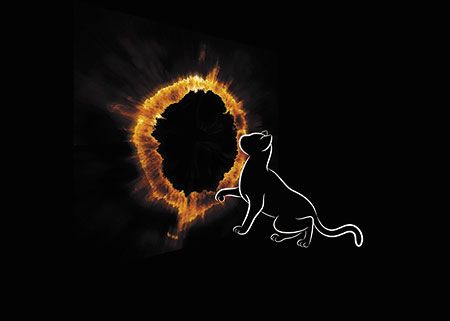Stop burning new hires
If youre burning through veterinary team members, try a new approach to employee orientationand snuff the fires for good.

Photo: Shutterstock.comLife is good. Your new hire has jumped through all the hoops of the hiring process, and she seems like the perfect fit. Fast forward six weeks, and she suddenly stops showing up for work. Bummer. Now you're looking for your next great team member and asking yourself, “What went wrong?”
In a profession where baptism by fire is the norm, it's no wonder we have a 21 percent average annual turnover rate, according to Compensation and Benefits, Eighth Edition (American Animal Hospital Association, 2016). And when you consider the cost of replacing a team member-an estimated one-and-a-half times salary-it's critical to hire, develop and keep A-list employees.
New employee orientation is so much more than showing someone where to park and filling out paperwork. It's more than checklists and passwords, new rules and new friends-and finding out who to avoid before they've had their morning coffee. New employee orientation is a process that lasts several weeks and involves your whole team.
There are three stages of orientation: the pre-arrival stage, the encounter stage and the metamorphosis stage. Let's examine each one:
The pre-arrival stage establishes the way new employees arrive when they join your hospital. Your new hire will have her own value system and preconceived ideas about your practice and what it's like to work there. Your team's role is to be upfront and honest about your organization and your expectations for the position.
For instance, if you say value hard work, but on day one your new hire sees other team members loafing while management looks the other way, she'll likely be disappointed. After all, she thought hard work was a value your practice shared. So set clear expectations that define your hospital's values (if you don't have a healthy culture start here) and the qualities you require for successful candidates.
During the encounter stage expectations and reality collide. This is when new employees will discover whether their preconceptions are correct. And we lose people in this collision.
If we don't provide realistic expectations during our interview process, we create a situation the new team member doesn't want to exist in. You can help new employees navigate this stage by assigning mentors. Look for someone in the new hire's department who embodies your practice's culture and can guide new employees through this process. The mentor, as well as managers and owners, will be a resource for new employees and should check in with new hires several times a week.
The final part of orientation is the metamorphosis stage. During this stage, the employee decides that the discrepancies between expectations and reality aren't deal-breakers. You'll work through the discrepancies, the employee will adjust, and finally she will find her place in your hospital's culture.
The key to keeping people through this stage and beyond is to establish good organizational culture-and to employ good people in your organization. Employees will put up with a lot-including long hours in a profession where compensation is often lower than we wish-but they will not tolerate toxicity.
Of course, you'll still lose some employees much quicker than you expected. Perhaps the collision occurs because the new hire isn't ready to function in an organization as awesome as yours. That's OK! Your goal is to do your best to put employees on the path to success.
Consider these steps to improve your orientation process:
> Evaluate your organization, its culture and employees, and make certain the image you want to portray is the reality.
> Review your interview process and ensure that each step educates potential new hires about expectations and offers candidates opportunities to talk to other team members.
> Select mentors from each department and educate them about their role and your expectations. (If you're an organization of fewer than 10 people, perhaps one mentor for the entire practice is appropriate.)
> Create a communication process for you and your mentors so there are no surprises about how employees are adjusting.
> Be open to suggestions from your team to improve the orientation process. After all, everyone feels the heat when your practice is short-staffed.
If you're sick of getting burned by departing team members, take the time to evaluate how you're welcoming new hires. Chances are, a little support will go a long way to creating lasting relationships.
Katie Adams, CVPM, is director of Curriculum Development at IGNITE Veterinary Solutions.